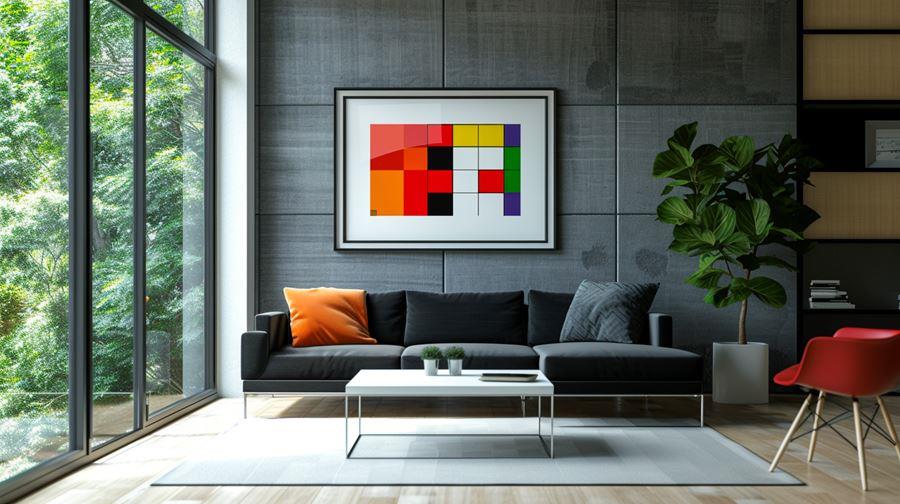
In an era where digital displays flicker in every corner of our lives, the tactile charm of posters has made a surprising comeback in the realm of interior design. Once considered relics of the past, these paper and ink creations are now coveted for their ability to inject personality and warmth into the high-tech homes of today. This resurgence is a nod to the nostalgia of a simpler time, contrasting sharply with the transient nature of digital media.
The history of posters as art is a rich tapestry, woven through decades of cultural and aesthetic shifts. From vintage advertisements to iconic band posters, these pieces have chronicled our societal evolution. Their return to the limelight is not just a trend; it’s a statement about the enduring power of visual storytelling.
Understanding poster art and its impact on interior design
Poster art is not monolithic; it’s a genre that spans across a spectrum of styles and periods. Vintage posters often carry the allure of history, their aged patina telling stories of bygone eras. They evoke a sense of nostalgia, creating a dialogue between the past and present within a space. Modern posters, on the other hand, can be minimalistic or bold, often characterized by sharp lines and a contemporary color palette. They reflect the current zeitgeist, offering a fresh perspective.
Contemporary styles push the envelope further, often blurring the lines between poster art and fine art. These pieces can be abstract or hyper-realistic, challenging the viewer’s perceptions and enhancing the emotional depth of a room. Each type of poster art holds the potential to resonate on a personal level, transforming a house into a home with its silent narrative.
Selecting the perfect frame for your poster
The frame around a poster is more than a boundary; it’s a statement. It can elevate the art, providing context and complementing its design. When choosing a frame, consider the interplay of materials—wooden frames bring warmth and rustic charm, while metal frames offer a sleek, modern edge. The color and style should harmonize with the poster, accentuating its features without overpowering them.
Framing also serves a protective purpose, safeguarding the art from the elements. It’s an investment in longevity, ensuring that the poster remains a vibrant part of your decor for years to come. The right frame transforms a poster from a mere piece of paper into a cherished work of art.
Integrating poster art in high-tech environments
How does one balance the analog allure of poster art with the sleekness of modern technology? It’s about creating a dialogue between the two. Consider the placement of your poster art in relation to tech elements. A well-placed poster can soften the coldness of electronic devices, bringing a human touch to the space.
Lighting plays a crucial role, too. The right illumination can enhance the colors and details of a poster, giving it a life of its own amid the glow of screens. Aim for a harmonious balance, where art and technology coexist, each enhancing the other’s presence in your living environment.
Chris Mcdonald has been the lead news writer at complete connection. His passion for helping people in all aspects of online marketing flows through in the expert industry coverage he provides. Chris is also an author of tech blog Area19delegate. He likes spending his time with family, studying martial arts and plucking fat bass guitar strings.